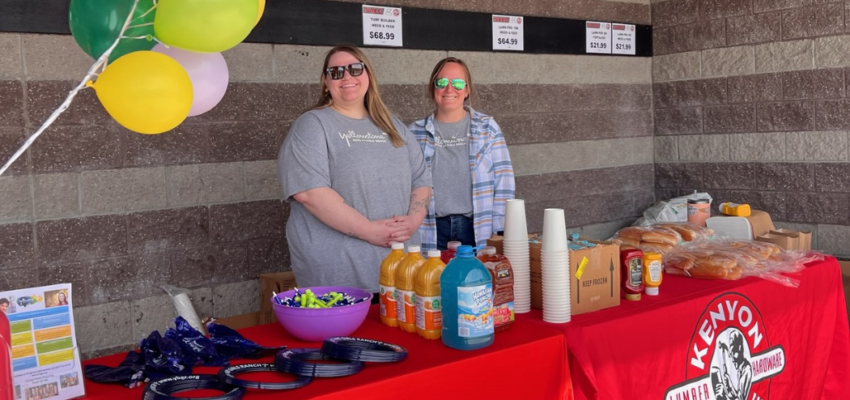
YBGR Staff Give Back: 4,238 Hours of Volunteering Across Montana

Every hour counts—and YBGR employees are proving it in powerful ways! In just a quarter’s time, our team spent 4,238 hours volunteering across Montana. From coaching youth sports to mentoring kids, delivering meals, serving on boards, and so much more, they’re making a real difference far beyond the workday.
This is what it looks like when caring people come together. We don’t just serve our communities—we’re part of them.
More Than Numbers: The Heart Behind the Service
What makes these hours so meaningful isn’t just the total—it’s the spirit behind them. Whether it’s firing up the grill for a crowd, helping a neighbor in need, or quietly mentoring a young athlete, our team shows up with commitment, care, and humility. These moments build lasting connections and communities that thrive.
Take Leslin Ossoff, Regional Clinical Director, and Alexis Freydenfelt, Administrative Supervisor, for example. In May, they volunteered at a Kenyon Noble event in Bozeman, where they grilled hot dogs for kids and helped families build flowerpots in time for Mother’s Day. It’s a snapshot of the kind of hands-on care and connection our staff bring into their communities every day.
Why Volunteering Matters at YBGR
At Yellowstone Boys and Girls Ranch, we believe community involvement is part of who we are, not just what we do. When our staff give their time, they’re helping create the positive connections that kids, families, and neighbors need to succeed. Together, we’re helping youth grow stronger and communities grow closer.
To every employee who gives so generously—thank you. Your time and heart make a lasting difference.
Stay Connected
Stay tuned to our news updates for the latest from across Montana, and follow us on social media. You can find us on LinkedIn at Yellowstone Boys and Girls Ranch, Instagram at @ybgr_cares, and Facebook at Yellowstone Boys and Girls Ranch.

Dr. Jane Gillette Appointed Board Chair at YBGR
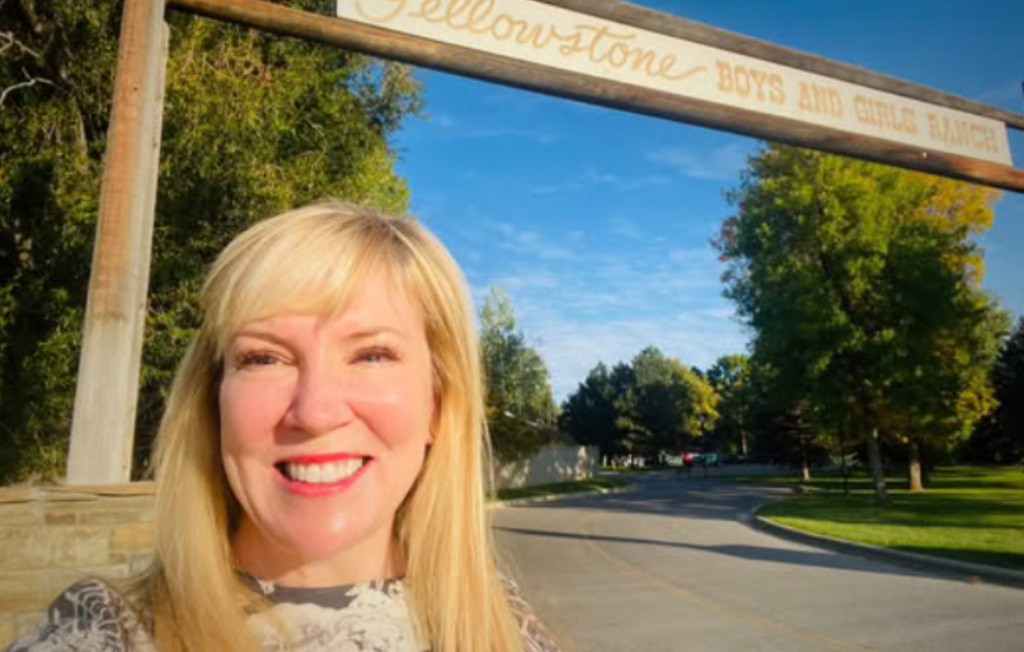
We’re excited to announce the appointment of Dr. Jane Gillette as Chair of our Board of Directors, effective July 1st, 2025.
Dr. Gillette has served on the Board since 2021 and was Vice Chair from July 1st, 2024, through June 30th, 2025. A Montana State Legislator, she is a recognized leader in primary disease prevention, health disparities, and evidence-based healthcare.
Her past leadership roles include serving as Chair of the American Dental Association’s Council on Access, Prevention, and Interprofessional Relations and Media Spokesperson for the ADA on Evidence-based Dentistry. She is a recipient of the ADA/American Association of Dental Research Evidence-based Practice Award and the HRDC IX Future Generations Award.
Dr. Gillette has also served on nonprofit healthcare and research boards, including Save the Mothers USA, the American Academy of Pediatric Dentistry, the Mountain Health CO-OP, and the NIH-funded NW PRECEDENT research network.
Stay Connected
Stay tuned to our news updates for the latest from across Montana, and follow us on social media. You can find us on LinkedIn at Yellowstone Boys and Girls Ranch, Instagram at @ybgr_cares, and Facebook at YBGR and Yellowstone Boys and Girls Ranch.

13 Quotes Illustrating the Power of Building on Strengths

Would you build a house on unsteady ground? Probably not. So why overlook a child’s strengths when guiding them?
Every child possesses an inherent set of strengths. And when we lean into them rather than focusing on weaknesses, we empower—laying a solid foundation for kids to thrive!
Below are thirteen quotes illustrating the power of building on children’s strengths.
Quotes Illustrating Building on Strengths
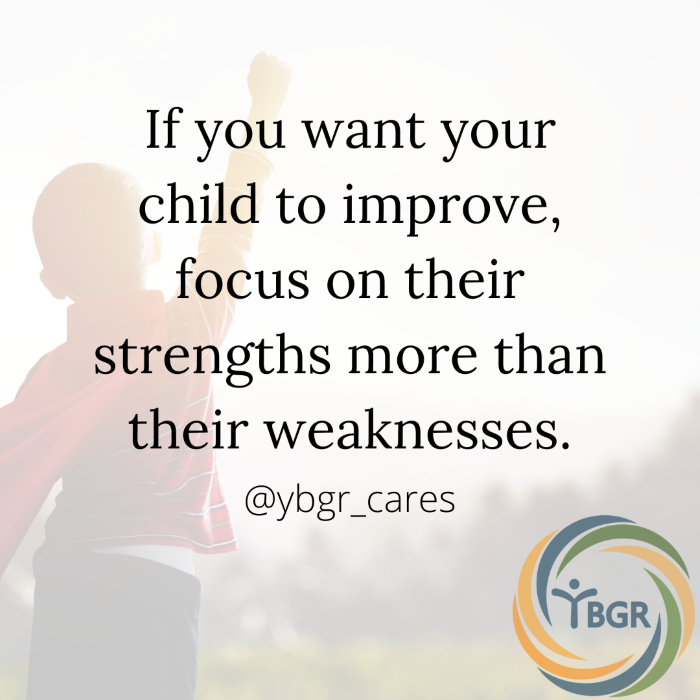
Quote 1: If you want your child to improve, focus on their strengths more than their weaknesses. – @ybgr_cares
Focusing on strengths isn’t about ignoring challenges—it’s about helping kids use what’s already working as a springboard. When a child experiences success in one area, they gain what psychologists call a “mastery experience.” These successes build self-efficacy, the belief that “I can handle this,” which research shows is key to motivation, resilience, and future effort.
Kids who feel capable are more likely to try new things, persevere through setbacks, and tackle areas they struggle with because they have proof their effort matters.

Quote 2: There needs to be a lot more emphasis on what a child CAN do instead of what they cannot. – Temple Grandin
When we point out what kids can do, we help them build a sense of competence that drives learning. Studies on motivation show that children are more willing to take on difficult tasks when they feel capable in at least one area—it fuels persistence, curiosity, and a willingness to take risks.
It’s not about empty praise or inflating self-esteem. It’s about reflecting back real strengths and effort, so kids learn to trust their abilities and stretch beyond their comfort zone.
Research rooted in Self-Determination Theory shows that when kids feel competent, they’re more intrinsically motivated and more likely to persevere through challenges.
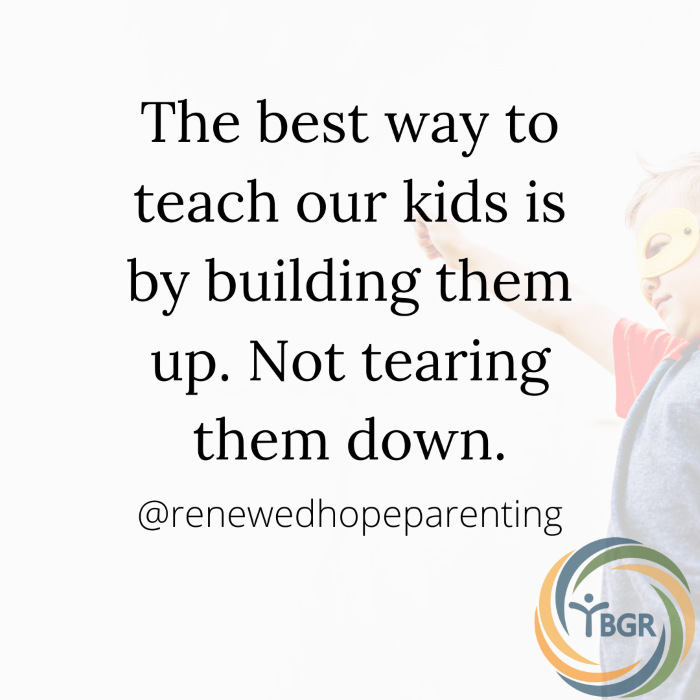
Quote 3: The best way to teach our kids is by building them up. Not tearing them down. – @renewedhopeparenting
Research on positive reinforcement shows that kids learn better when they feel safe and valued. Encouragement reinforces desired behaviors and creates conditions where kids stay open to learning.
Harsh criticism or punishment may stop behavior temporarily, but it often triggers shame or fear—shutting down growth and effort.
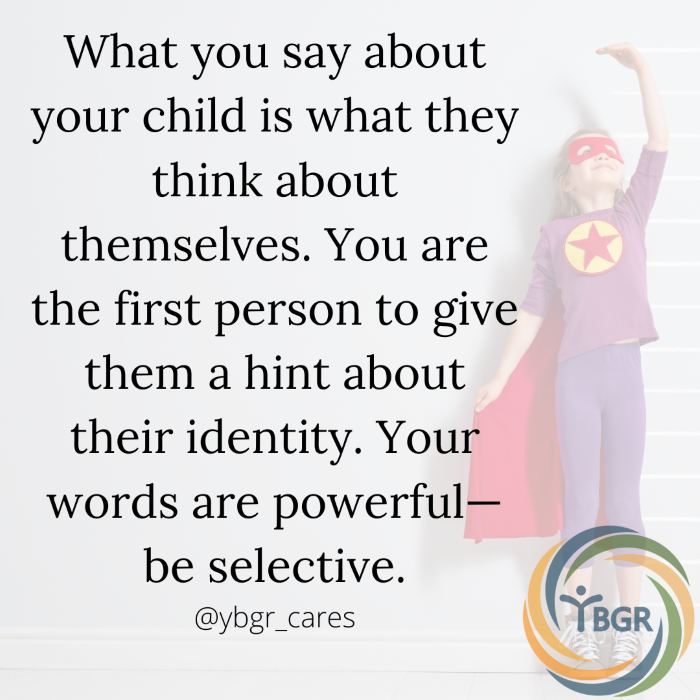
Quote 4: What you say about your child is what they think about themselves. You are the first person to give them a hint about their identity. Your words are powerful—be selective. – @ybgr_cares
Children form their sense of self partly through the repeated feedback they hear from trusted adults. When we highlight strengths, we help them build an inner voice that says, “I am capable,” “I am kind,” or “I can try.” Over time, this shapes identity and self-esteem, influencing how they approach challenges.
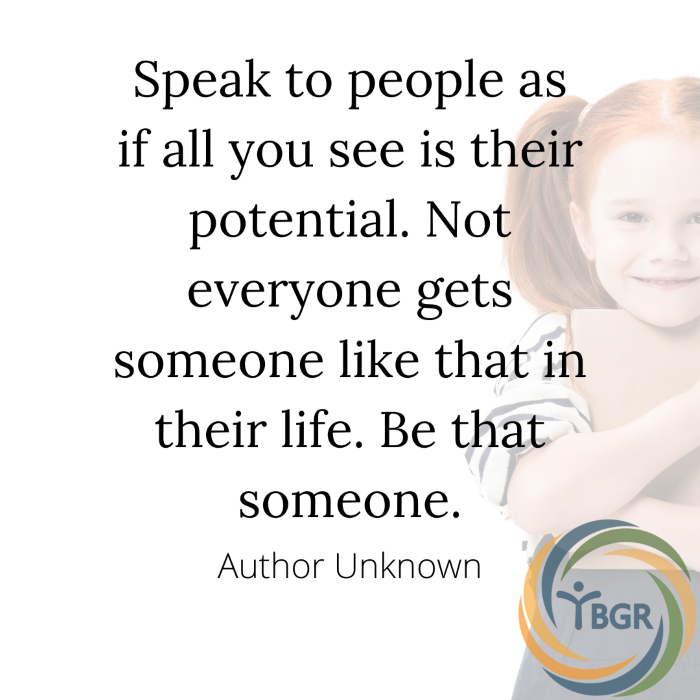
Quote 5: Speak to people as if all you see is their potential. Not everyone gets someone like that in their life. Be that someone. – Unknown
The Pygmalion effect demonstrates that children often rise or fall to meet the expectations adults have of them. When we communicate belief in a child’s potential, we help them envision a future they might not dare consider otherwise—and that belief can motivate them to strive toward it.
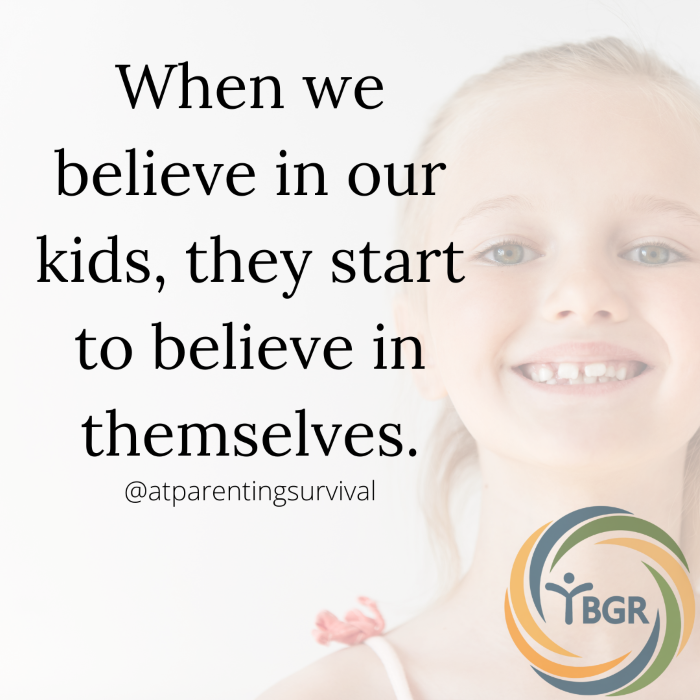
Quote 6: When we believe in our kids, they start to believe in themselves. – @atparentingsurvival
Children build confidence through the belief and encouragement of trusted adults. Our belief acts as a kind of scaffolding—support that helps kids take steps they might not risk alone. Over time, that borrowed confidence helps them build their own self-efficacy.
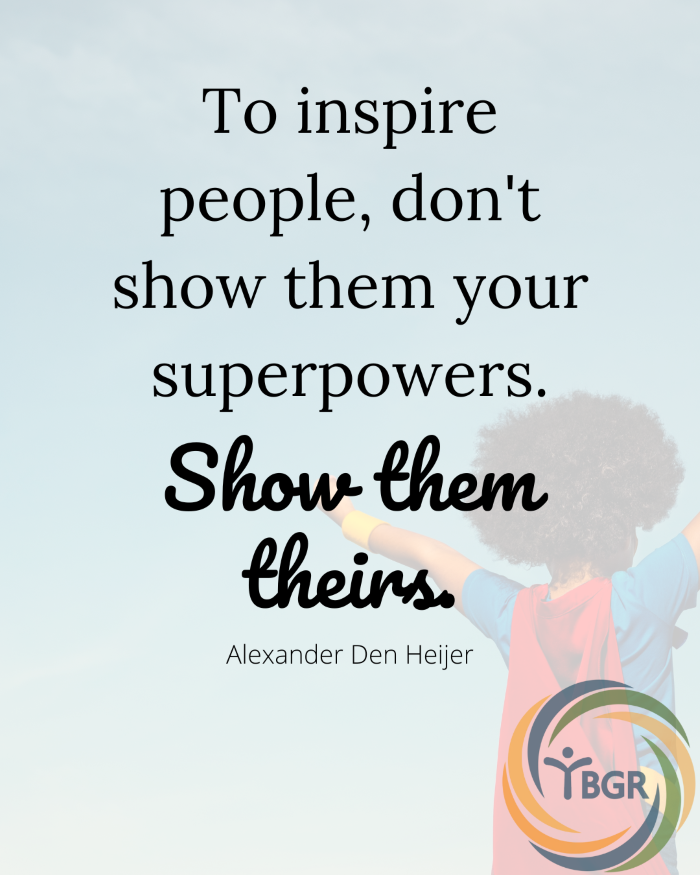
Quote 7: To inspire people, don’t show them your superpowers. Show them theirs. – Alexander Den Heijer
Want to inspire a child? Help them see what they’re capable of. Confidence grows when kids experience their own strengths in motion.
It’s not about praise—it’s about giving them meaningful chances to contribute, succeed, and feel the impact of their effort. That’s what drives lasting motivation and a belief in their ability to handle what comes next.
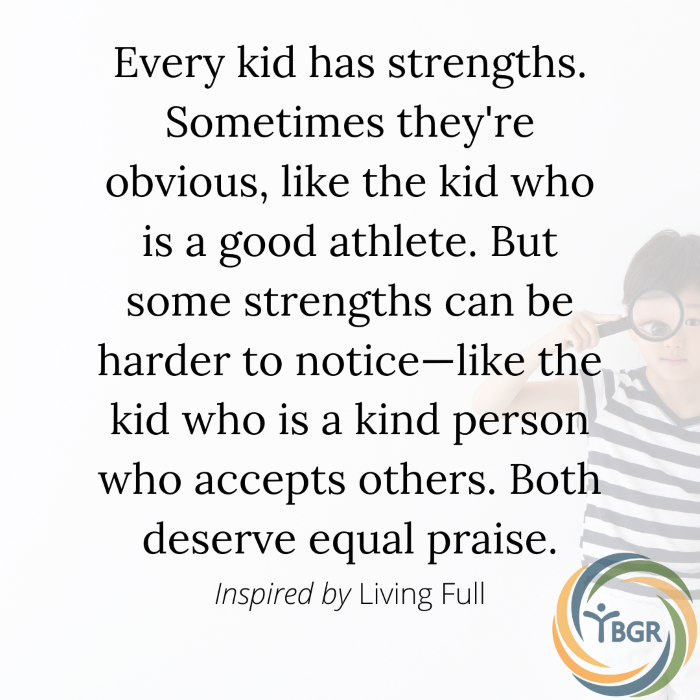
Quote 8: Every kid has strengths. Sometimes they’re obvious, like the kid who is a good athlete. But some strengths can be harder to notice—like the kid who is a kind person who accepts others. Both deserve equal praise. – Inspired by Living Full
Character development studies show that praising traits like kindness, fairness, or perseverance is just as important as praising achievement. Both help kids build self-worth and guide how they contribute to the world.
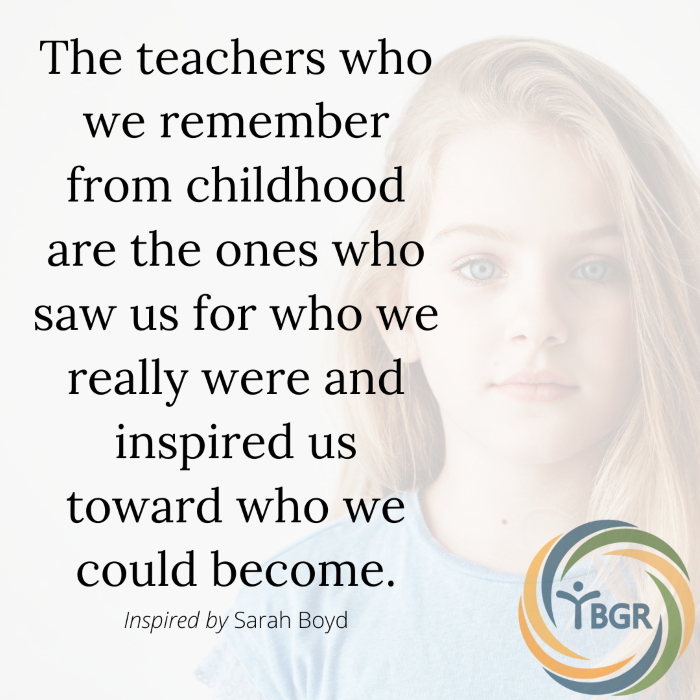
Quote 9: The teachers who we remember from childhood are the ones who saw us for who we really were and inspired us toward who we could become. – Sarah Boyd
Kids internalize the reflections they hear from trusted adults. When we name strengths—kindness, creativity, courage—it helps shape how they see themselves.
Over time, these early reflections form the foundation of identity, confidence, and motivation to develop into their full potential.
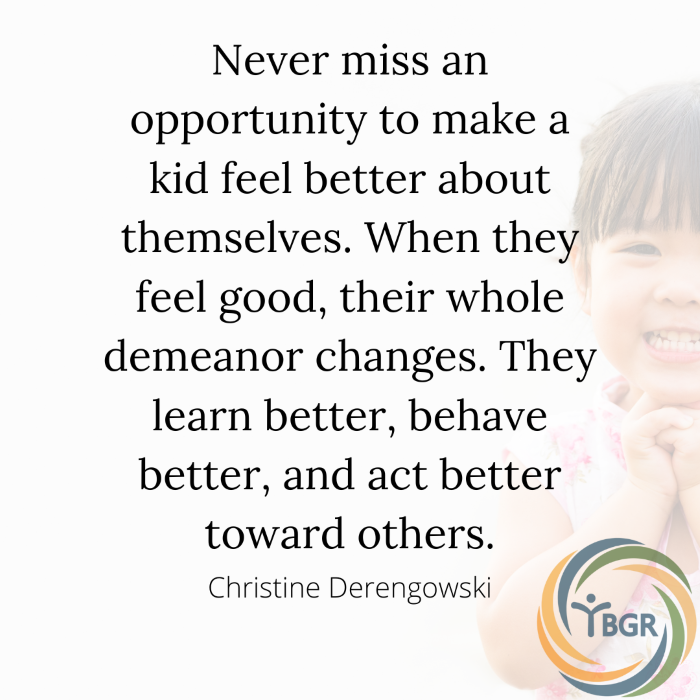
Quote 10: Never miss an opportunity to make a kid feel better about themselves. When they feel good, their whole demeanor changes. They learn better, behave better, and act better toward others. – Christine Derengowski
Self-esteem research shows that when children feel valued, they’re more likely to engage positively with learning, peers, and adults.
Genuine encouragement reduces anxiety and promotes healthy risk-taking—socially and academically. Feeling seen helps kids approach the world with confidence, curiosity, and resilience instead of fear or avoidance.
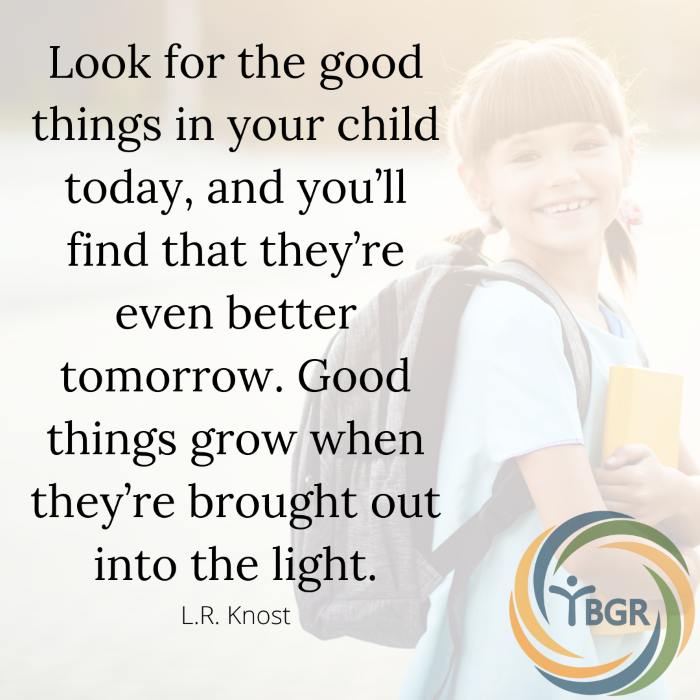
Quote 11: Look for the good things in your child today, and you’ll find that they’re even better tomorrow. Good things grow when they’re brought out into the light. – L.R. Knost
Reinforcement theory shows that the behaviors we notice and praise are more likely to grow. Kids tend to repeat what earns positive attention from the adults they care about — attention shapes behavior.
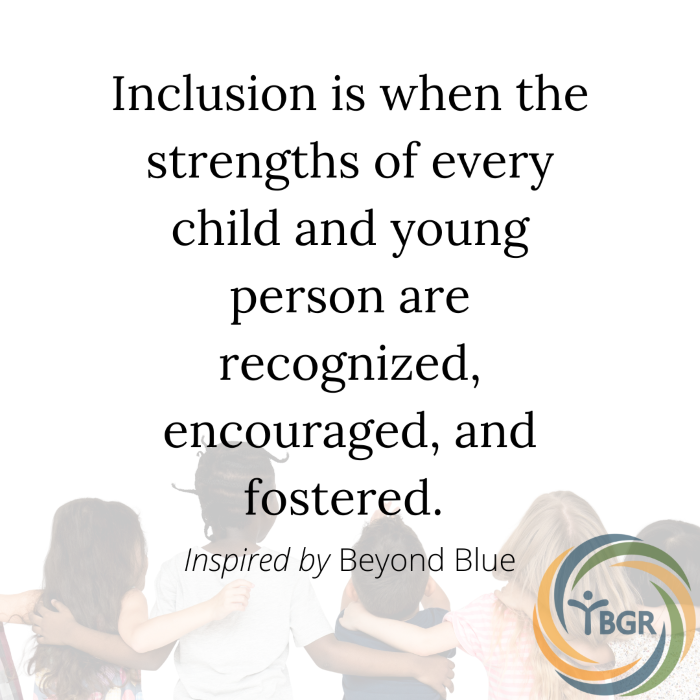
Quote 12: Inclusion is when the strengths of every child and young person are recognized, encouraged, and fostered. – Inspired by Beyond Blue
Research on belonging shows that when kids feel their unique strengths are valued, they’re more motivated to participate, learn, and connect. Inclusion isn’t about treating kids the same—it’s about helping each contribute in ways that build confidence and connection.
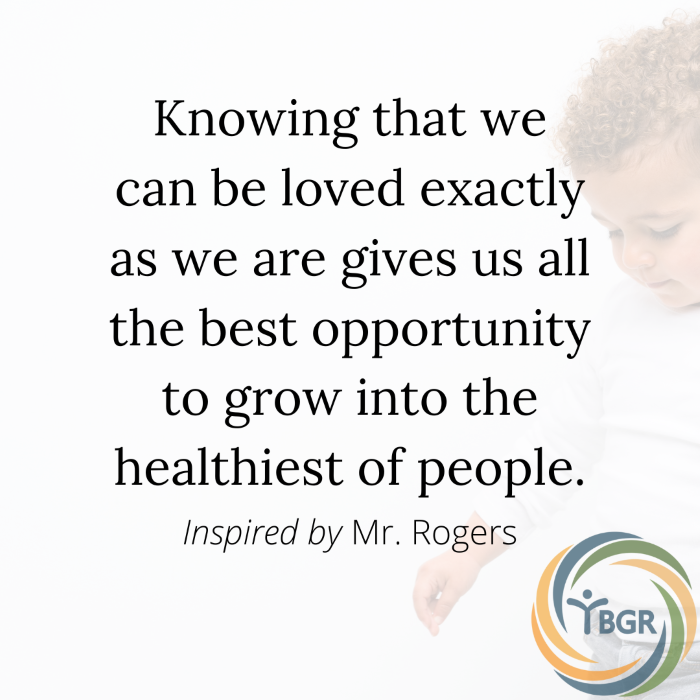
Quote 13: Knowing that we can be loved exactly as we are gives us all the best opportunity to grow into the healthiest of people. – Inspired by Mr. Rogers
Attachment theory suggests that unconditional acceptance fosters the emotional security children need to explore, try, and grow. When kids feel loved as they are, they’re more willing to take healthy risks and bounce back from setbacks.
Want More?
Check out the rest of our blog and follow us on social media. You can find us on LinkedIn at Yellowstone Boys and Girls Ranch, Instagram at @ybgr_cares, and Facebook at Yellowstone Boys and Girls Ranch.

Walmart’s Generosity Helps Yellowstone Youth Gardening Thrive
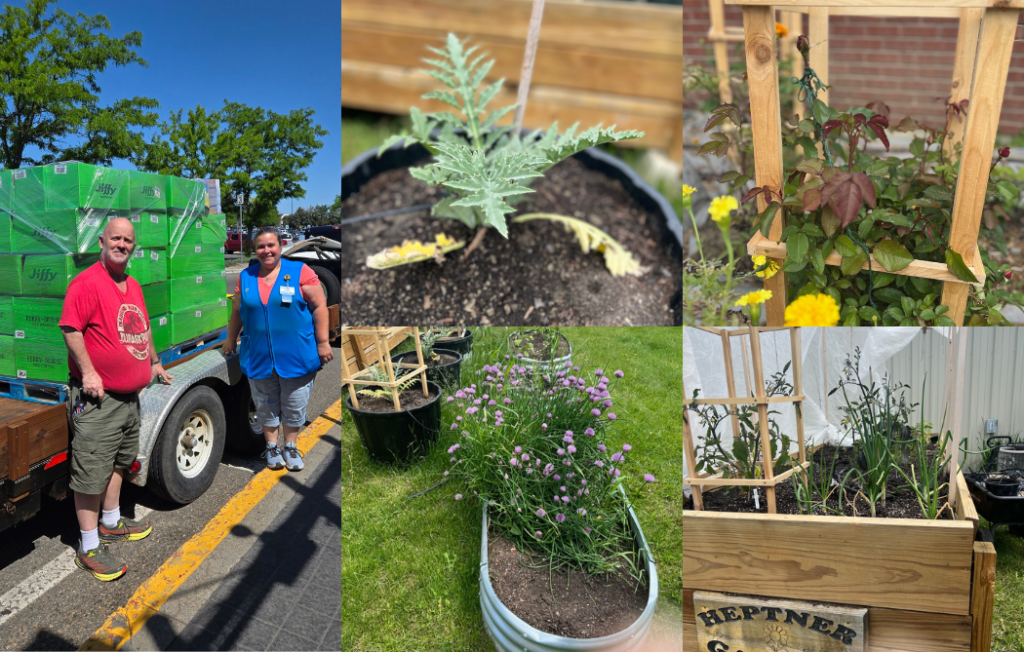
Did you know that every June, Walmart steps up to support kids at Yellowstone Boys and Girls Ranch by donating unsold seeds, pots, soil, and gardening supplies? Their contributions play a vital role in keeping Yellowstone youth gardening programs thriving — helping maintain the Ranch gardens and supporting horticultural activities at Yellowstone Academy.
Through these programs, youth engage in meaningful, hands-on learning that teaches responsibility, patience, and growth.
How Yellowstone Youth Gardening Builds Skills and Confidence
Yellowstone youth gardening isn’t just about planting seeds; it’s about planting the roots of resilience. Thanks to Walmart’s generosity, youth at Yellowstone Academy and the Ranch experience the full cycle of care, from preparing the soil to seeing the first sprouts. Along the way, kids learn the value of hard work, gain a sense of responsibility, and build patience as they nurture their plants.
The donated supplies help our gardens flourish all season, creating spaces where youth connect with nature, experience the calming benefits of outdoor work, and see the results of their dedication. For many, it’s a chance to build confidence and discover new interests they might not have explored otherwise.
Mitch Burns from Yellowstone Academy met with April from Walmart to pick up this year’s donation for our youth gardening program—a reminder of how local partnerships strengthen our ability to serve youth.
Thank You, Walmart!
We’re deeply grateful to Walmart for their ongoing support of Yellowstone youth gardening projects and programs. Their generosity helps make a difference in the lives of the kids we serve, giving them opportunities to grow, learn, and heal in new ways.
Stay Connected
Stay tuned to our news updates for the latest from across Montana, and follow us on social media. You can find us on LinkedIn at Yellowstone Boys and Girls Ranch, Instagram at @ybgr_cares, and Facebook at Yellowstone Boys and Girls Ranch.

Breaking the Silence: Why Men’s Mental Health Deserves Our Attention

The statistics surrounding men’s mental health in the United States are sobering. Did you know that around 75% of all suicide victims in the U.S. are men? Or that over 6 million men experience depression each year—many going undiagnosed?
Suicide remains one of the leading causes of death among males, a heartbreaking reality that too often goes unspoken.
The Silent Epidemic: Why Men’s Mental Health Struggles Are Overlooked
Mental health challenges among men are sometimes called a silent epidemic because they’re rarely discussed openly. Society tends to sweep men’s emotional struggles under the rug, driven by stereotypes about masculinity and strength. From an early age, boys are taught, directly or indirectly, that showing emotion is a sign of weakness, that they should “tough it out” no matter what they’re feeling inside.
But men aren’t machines. They’re human—with real emotions, struggles, and limits. Yet stigma and unspoken expectations often prevent them from expressing vulnerability or seeking help.
Even public figures are speaking out to help change that narrative.
“We need to feel like we can speak about it. The only way we can beat the stigma is by talking about it.” — Prince Harry
“Anyone can suffer from mental health issues. No matter how rich you are or how famous or powerful.” — Dwayne “The Rock” Johnson
Shattering Stigma, One Conversation at a Time
Men’s mental health struggles are common. Men, like women, grapple with trauma, loss, anxiety, depression, and grief. But societal expectations often block them from reaching out—and that silence can be deadly.
Imagine what might change if we let go of frameworks that equate manhood with emotional suppression.
“Depression is something that just happens. You don’t have to be ashamed of it.” — Michael Phelps
“There’s no shame in talking about your feelings and asking for help.” — Ryan Reynolds
Breaking down stigma could save lives—encouraging men to seek help, healing, and hope.
Whether you’re a man working through life’s challenges, a parent raising a boy, a partner, a sibling, or a friend, we all have a role to play in creating space for these critical conversations. The time is now. Together, we can change the narrative and help future generations grow up knowing it’s okay to ask for help.
Want More?
For more content like you found in this article, check out the rest of our blog and follow us on social media. You can find us on LinkedIn at Yellowstone Boys and Girls Ranch, Instagram at @ybgr_cares, and Facebook at Yellowstone Boys and Girls Ranch.

Yellowstone Academy Gardening Takes Root

Meet Alissa Brady, Behavior Specialist at Yellowstone Academy, and the heart behind many of the gardening projects happening across campus! Thanks to Alissa’s leadership, the Yellowstone Boys and Girls Ranch garden beds are bursting with life — filled with plants that youth started from seed and recently transplanted into the soil they’ve spent weeks preparing.
How Yellowstone Academy Gardening Builds Lifelong Skills
Alissa has led the charge in bringing gardening to life at the Ranch. Through her guidance, youth are discovering the therapeutic value of growing something from the ground up. From planting seeds to nurturing seedlings and watching them thrive, kids are building patience, resilience, and quiet confidence through hands-on care.
But what’s growing here goes far beyond flowers and vegetables.
Yellowstone Academy gardening allows youth to connect with nature, experience the calming benefits of outdoor work, and learn important life skills. Each day spent in the garden helps them practice consistency, responsibility, and teamwork—all while creating something beautiful and nourishing.
Yellowstone Academy Gardening Supports Healing and Growth
At Yellowstone Academy, caring people like Alissa and her teammates are committed to creating learning experiences that support healing and personal growth. Gardening projects are just one example of how the Academy blends academics, therapeutic support, and real-world skills to help prepare youth for life.
We’re grateful for the heart Alissa and the Yellowstone Academy team bring to their work with the kids entrusted to our care. Together, they’re planting seeds of hope, healing, and strength.
Stay Connected
Stay tuned to our news updates for the latest from across Montana and follow us on social media. You can find us on LinkedIn at Yellowstone Boys and Girls Ranch, Instagram at @ybgr_cares, and Facebook at Yellowstone Boys and Girls Ranch.

It’s Survival. 13 Quotes on Trauma and Healing

What is trauma? Look it up in the dictionary, and you’ll find it defined as “a deeply distressing or disturbing experience.” And you know what? It’s painfully common.
According to the Sidran Institute of Traumatic Stress Education and Advocacy, about 70% of people will experience at least one traumatic event in their lifetime.
June is Post-Traumatic Stress Disorder (PTSD) Awareness Month—a time to shine a light on trauma, its lasting effects, and the importance of healing. Here are thirteen powerful quotes to inspire strength, resilience, and hope.
Quotes on Trauma and Healing
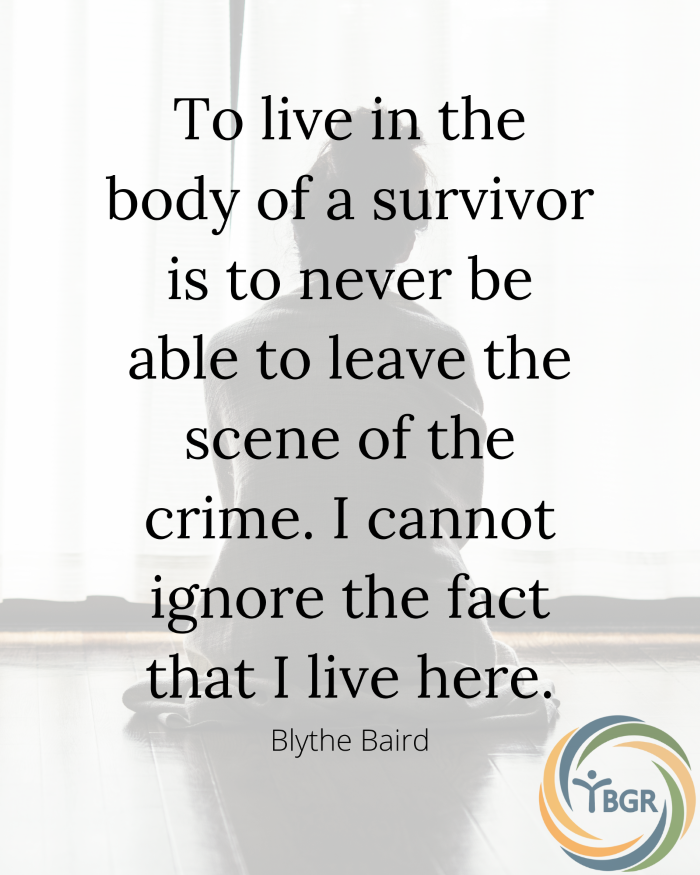
Quote 1: To live in the body of a survivor is to never be able to leave the scene of the crime. I cannot ignore the fact that I live here. – Blythe Baird
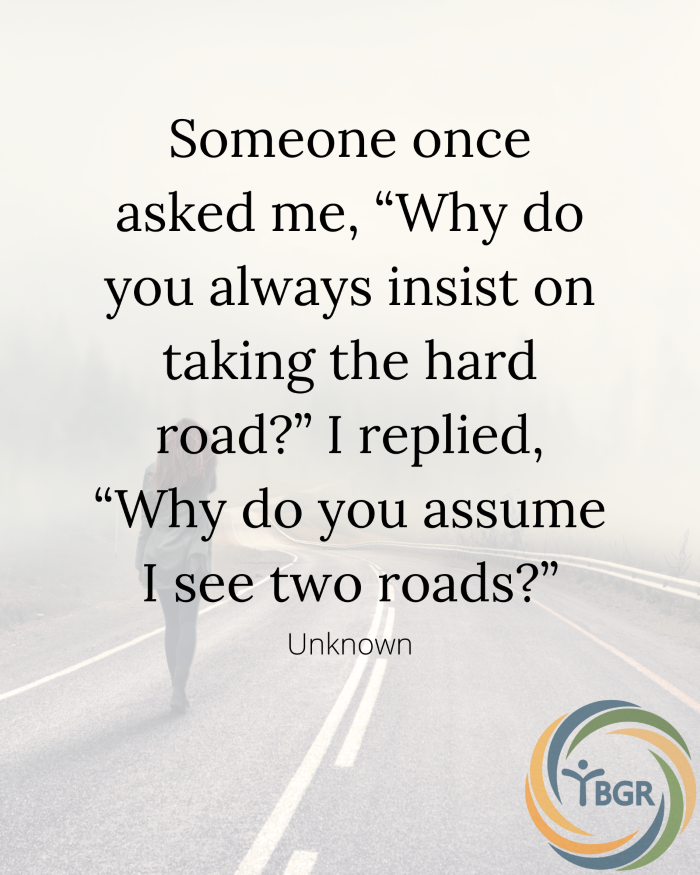
Quote 2: Someone once asked me, “Why do you always insist on taking the hard road?” I replied, “Why do you assume I see two roads?” – Unknown
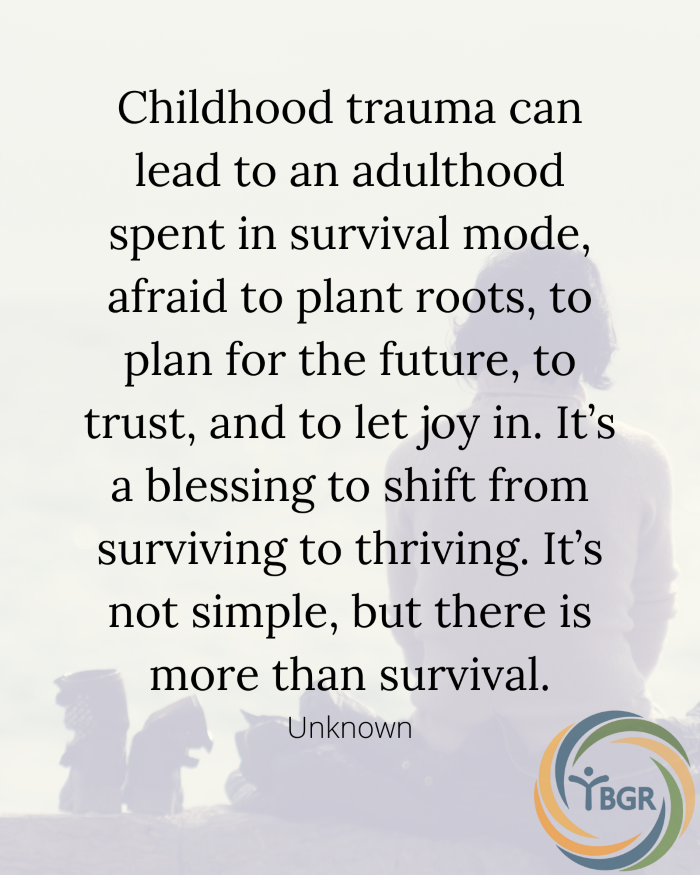
Quote 3: Childhood trauma can lead to an adulthood spent in survival mode, afraid to plant roots, to plan for the future, to trust, and to let joy in. It’s a blessing to shift from surviving to thriving. It’s not simple, but there is more than survival. – Unknown
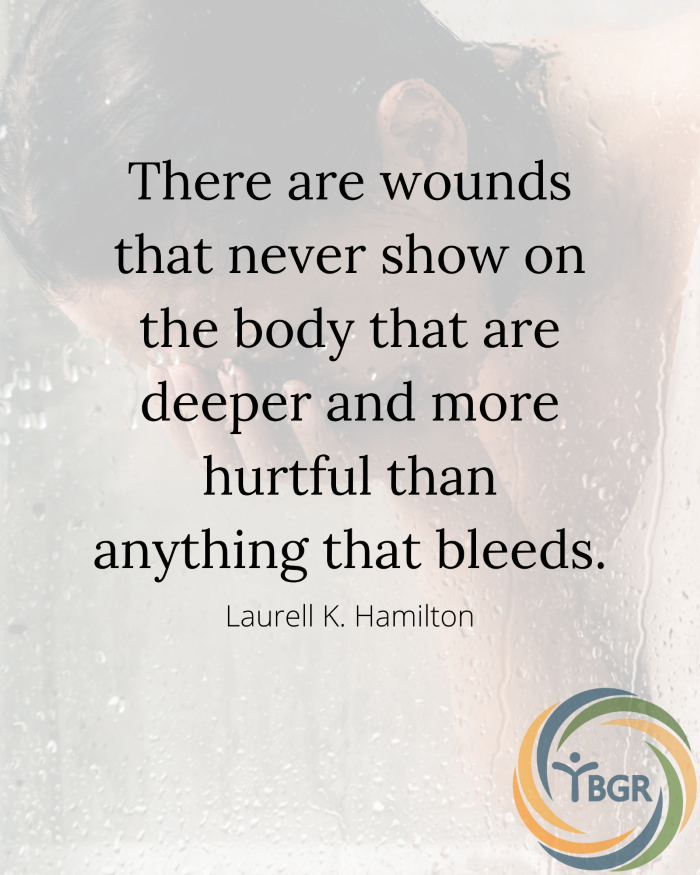
Quote 4: There are wounds that never show on the body that are deeper and more hurtful than anything that bleeds. – Laurell K. Hamilton
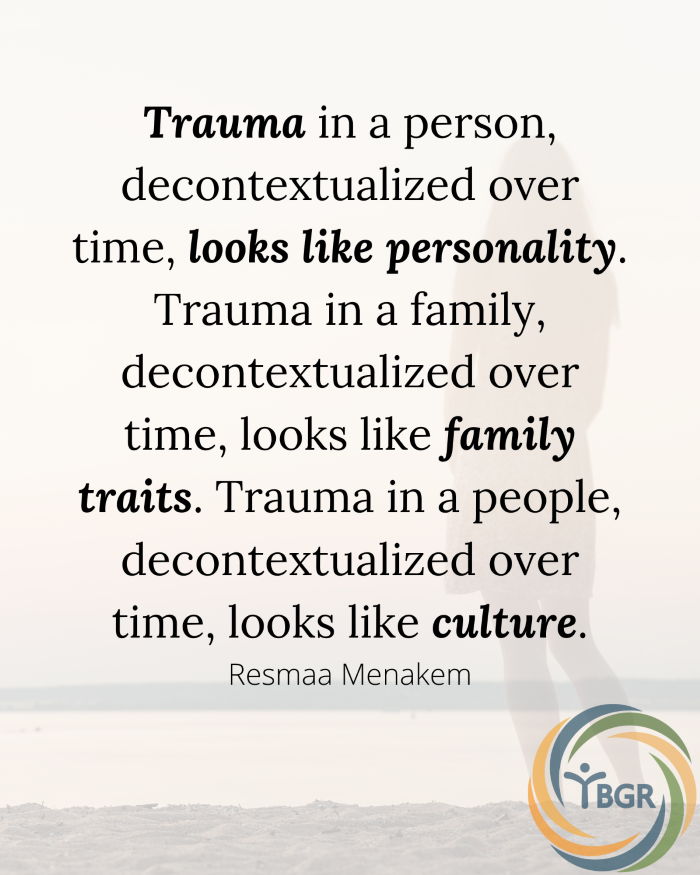
Quote 5: Trauma in a person, decontextualized over time, looks like personality. Trauma in a family, decontextualized over time, looks like family traits. Trauma in a people, decontextualized over time, looks like culture. – Resmaa Menakem
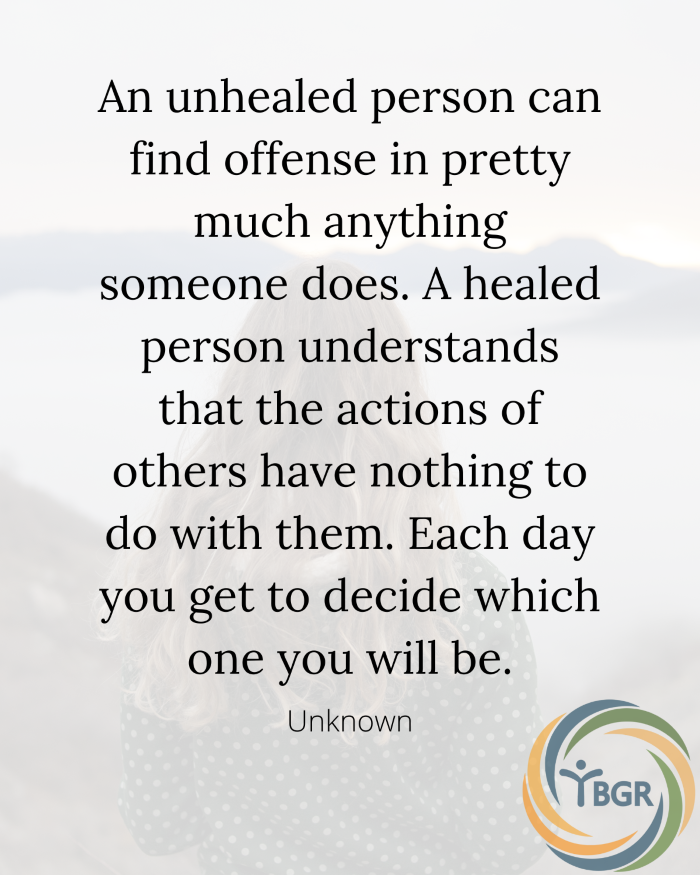
Quote 6: An unhealed person can find offense in pretty much anything someone does. A healed person understands that the actions of others have nothing to do with them. Each day you get to decide which one you will be. – Unknown
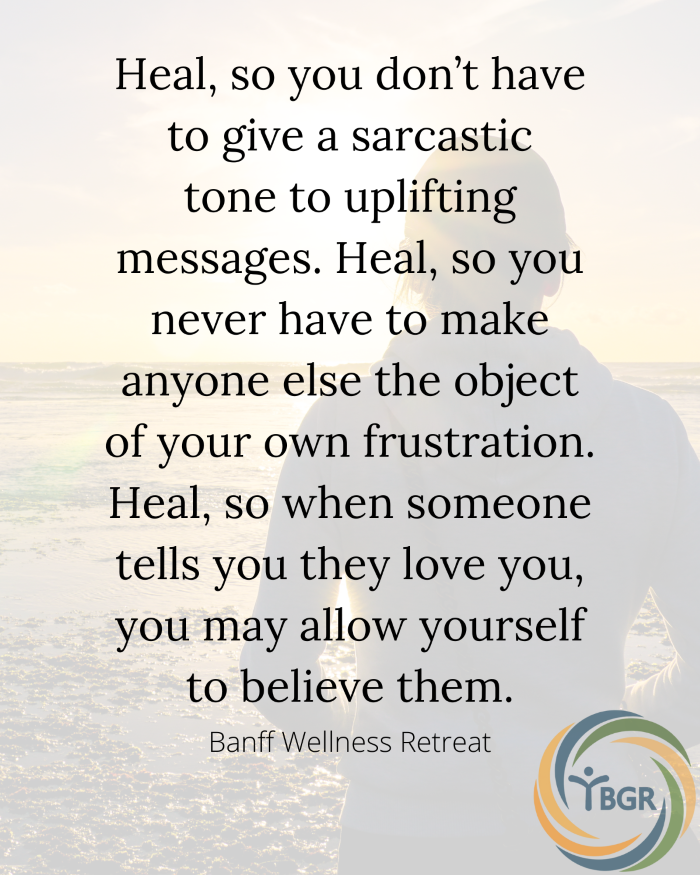
Quote 7: Heal, so you don’t have to give a sarcastic tone to uplifting messages. Heal, so you never have to make anyone else the object of your own frustration. Heal, so when someone tells you they love you, you may allow yourself to believe them. – Banff Wellness Retreat
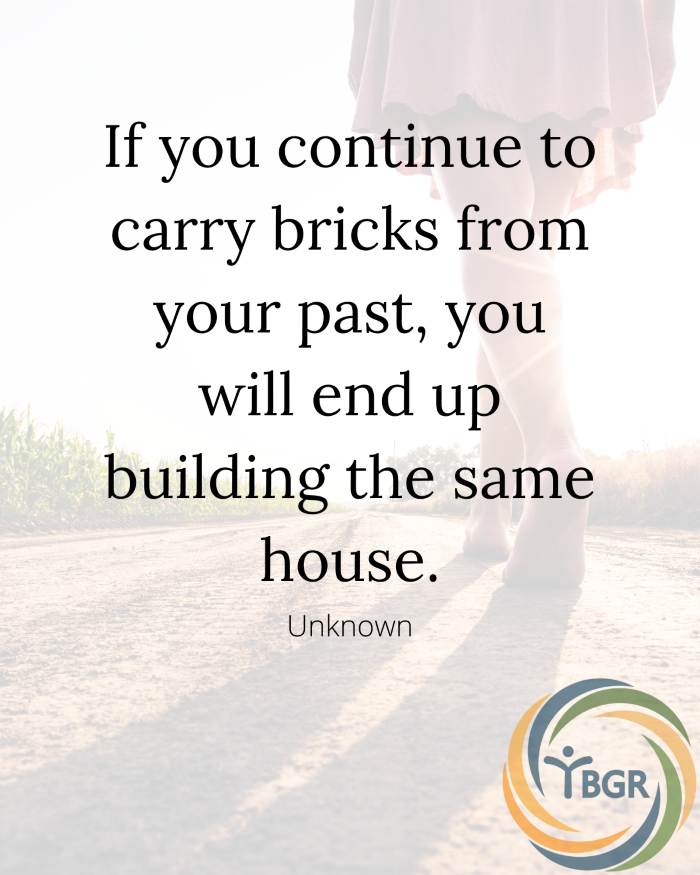
Quote 8: If you continue to carry bricks from your past, you will end up building the same house. – Unknown
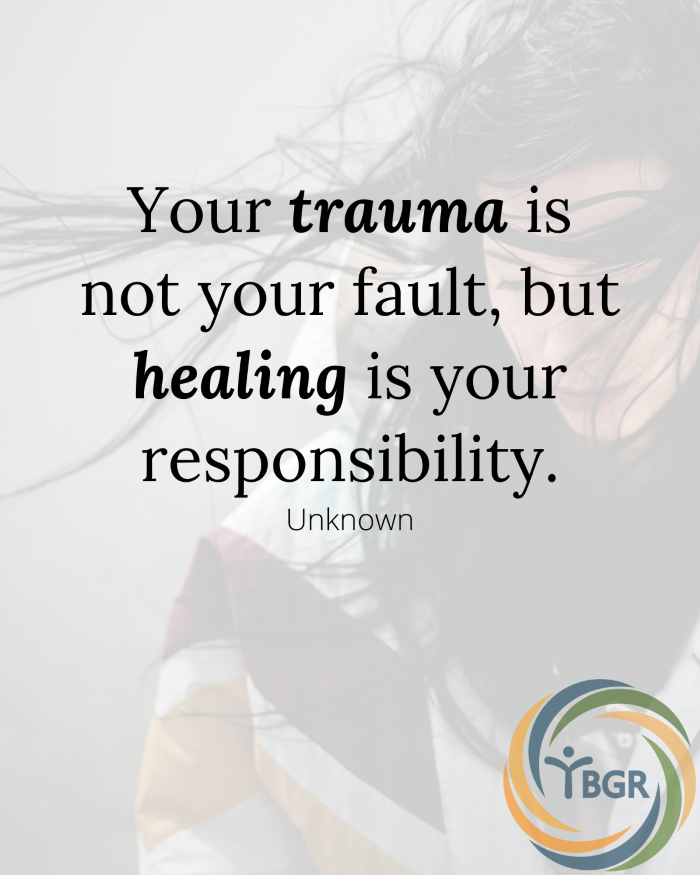
Quote 9: Your trauma is not your fault, but healing is your responsibility. – Unknown

Quote 10: As every therapist will tell you, healing involves discomfort. But so is refusing to heal. And over time, refusing to heal is always more painful. – Resmaa Menakem
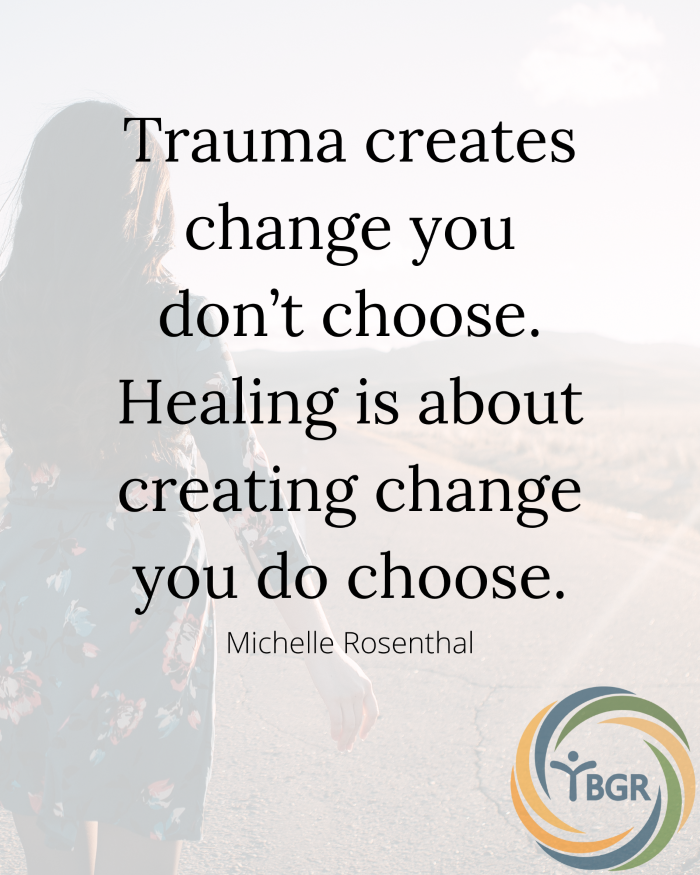
Quote 11: Trauma creates change you don’t choose. Healing is about creating change you do choose. – Michelle Rosenthal
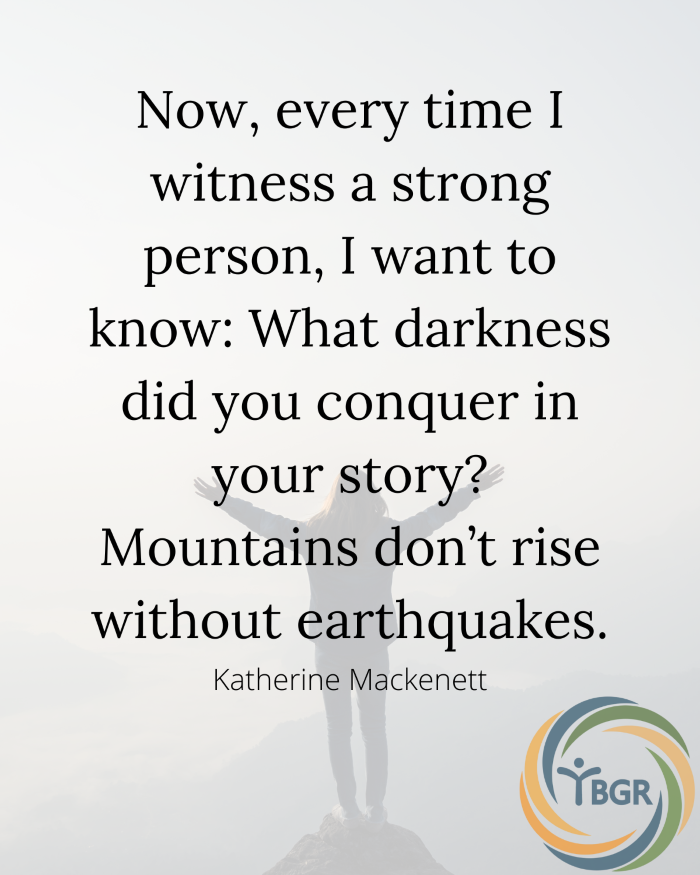
Quote 12: Now, every time I witness a strong person, I want to know: What darkness did you conquer in your story? Mountains don’t rise without earthquakes. – Katherine Mackenett
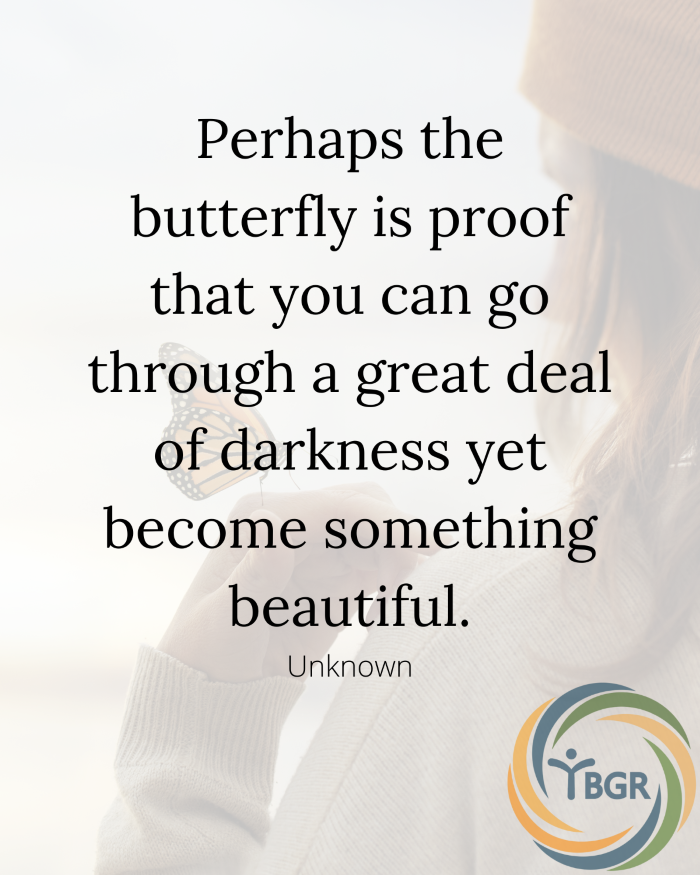
Quote 13: Perhaps the butterfly is proof that you can go through a great deal of darkness yet become something beautiful. – Unknown
Want More?
Check out the rest of our blog and follow us on social media. You can find us on LinkedIn at Yellowstone Boys and Girls Ranch, Instagram at @ybgr_cares, and Facebook at Yellowstone Boys and Girls Ranch.
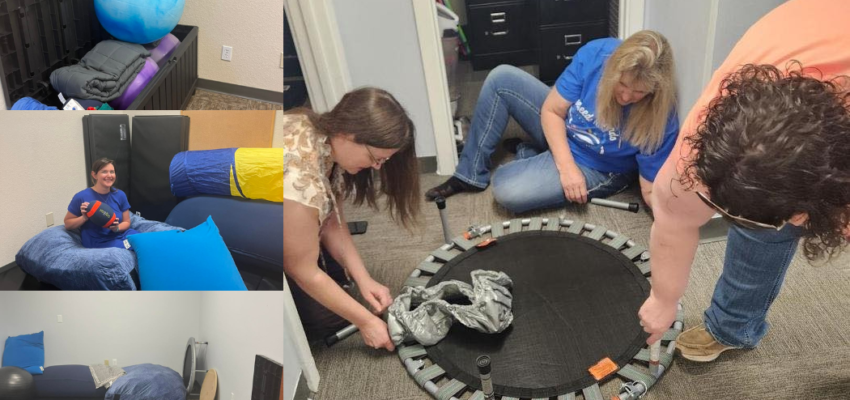
New YBGR SMART Rooms Are Helping Montana Kids Heal
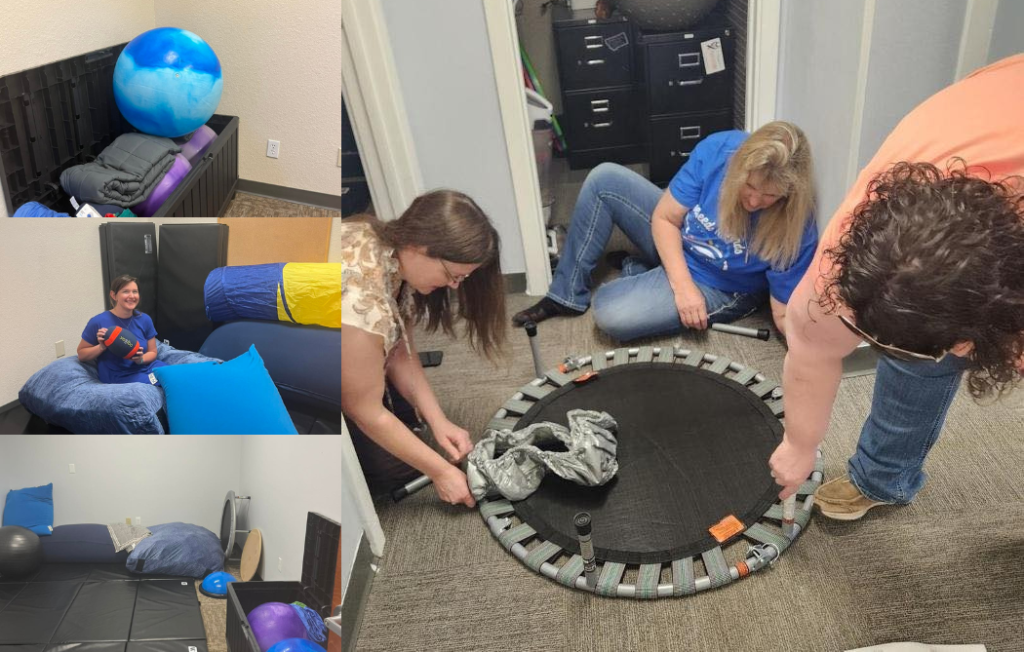
What if healing didn’t have to start with words? Across Montana, SMART rooms are offering kids who’ve experienced trauma a new way to reset, reconnect, and heal. These spaces use sensory experiences and are thoughtfully designed to support their unique needs.
Leading this effort is Charise Lemelin, Clinical Director of Community-Based Services, whose vision is bringing SMART rooms to life in communities across the state.
What Are SMART Rooms?
SMART rooms (Sensory Motor Arousal Regulation Treatment) are therapeutic spaces that help children and teens regulate emotions and behaviors in ways that go beyond traditional talk therapy. Developed by clinical experts at the Trauma Center at Justice Resource Institute, the SMART model integrates sensory and motor activities to support youth who have experienced complex trauma.
These rooms use tools like:
- Weighted blankets for comfort and grounding
- Fitness balls to promote body awareness and self-regulation
- Other sensory tools that help kids manage emotions and build resilience
Each space gives youth a place to pause, engage their senses, and practice healthy ways to navigate difficult moments.
Expanding SMART Rooms Across Montana
Thanks to Charise’s leadership, SMART spaces are becoming a vital part of our community-based services. Each new room reflects our commitment to trauma-informed care — helping youth access practical tools that support healing and growth.
Stay Connected
Stay tuned to our news updates for the latest from across Montana, and follow us on social media. You can find us on LinkedIn at Yellowstone Boys and Girls Ranch, Instagram at @ybgr_cares, and Facebook at Yellowstone Boys and Girls Ranch.

June Is PTSD Awareness Month: Exploring Trauma, Recovery, and Hope

Did you know June is PTSD Awareness Month? It’s a time to shed light on post-traumatic stress disorder (PTSD) — a serious mental health condition that can affect people of all ages and backgrounds.
What Is PTSD?
Post-traumatic stress disorder develops after exposure to highly stressful or traumatic events. This may include violence, abuse, accidents, natural disasters, or combat. It affects roughly 8 million Americans annually, including children, caregivers, and adults in our communities.
Check out the video below from Vietnam veteran Ron Whitcomb, where he shares his powerful story of navigating life with PTSD after returning from the war in the late 1960s.
PTSD Symptoms
PTSD symptoms can vary but often fall into these key categories:
Intrusive Memories
Intrusive memories can look like:
- Recurring, unwanted, distressing memories
- Flashbacks (reliving the traumatic event)
- Nightmares about the trauma
- Emotional or physical distress when reminded of the event
Avoidance
Avoidance can manifest as:
- Avoiding thoughts, feelings, or conversations about trauma
- Steering clear of places, people, or activities that bring back memories of trauma
Negative Changes in Mood and Thinking
Negative changes in mood and thinking can look like:
- Negative beliefs about self, others, or the world
- Feelings of hopelessness
- Memory gaps about trauma
- Feeling detached or estranged from loved ones
- Loss of interest in once-enjoyed activities
- Emotional numbness
Changes in Physical and Emotional Reactions
Changes in physical and emotional reactions can manifest as:
- Being easily startled or feeling on edge
- Self-destructive behaviors (e.g., substance misuse, reckless driving)
- Difficulty sleeping or concentrating
- Irritability, angry outbursts, or aggressive behavior
- Feelings of guilt or shame
PTSD in Children
For children under age 6, symptoms may also include:
- Re-enacting the trauma during play
- Frightening dreams
What Causes PTSD?
PTSD can result from any event that feels life-threatening or overwhelming. Common causes include:
- Combat exposure
- Physical or sexual assault
- Serious accidents
- Sudden loss of a loved one
- Childhood abuse or neglect
Treatment and Support
There is hope. PTSD treatment often includes therapy, medication, and support groups. Early intervention can make a big difference in healing and recovery.
Want to Learn More?
Click here for more information about PTSD causes, treatments, and how it affects children.
For more content like you found in this article, check out the rest of our blog and follow us on social media. You can find us on LinkedIn at Yellowstone Boys and Girls Ranch, Instagram at @ybgr_cares, and Facebook at Yellowstone Boys and Girls Ranch.

A Day to Remember: Yellowstone Academy Graduation, Class of 2025

Yesterday’s Yellowstone Academy graduation ceremony at the Ranch marked a powerful milestone—one that was years in the making for seven incredible students.
Some spent nearly their entire educational journeys as day school students at Yellowstone Academy, while others completed the final stretch of high school while in our care.
No matter their path, each student earned far more than a diploma. They walked away with a hard-won victory—a testament to perseverance, growth, and the power of care and connection.
Staff Reflections Highlight Growth, Resilience, and Strength
The 2025 Yellowstone Academy graduation ceremony opened with heartfelt remarks from John Boeder, Chaplain, and Cass Cole, Principal. Their words set the tone for a moving celebration grounded in hope and achievement.
Throughout the event, staff who stood beside these students over the years shared reflections on their growth and transformation.
Speakers included:
- Bobby Sipes, Teacher
- Tara Kirkegard, Behavior Specialist
- Dan Porisch, Former Behavior Specialist
- Lacey Jones, Therapist
- Jevon Lulf, Teacher
Their stories honored the progress each student made—both academically and personally.
Graduates Share Wisdom for the Road Ahead
Each graduate left their mark—and a quote of wisdom for others:
“Treat others how you want to be treated.”
“Working hard is important, but there is something that matters even more…believing in yourself.”
“Life is your game. If you have a dream, go chase it.”
“Life is too deep for words, so don’t try to describe it. Just live it.”
“Doubt kills more dreams than failure ever will.”
“The history you leave behind should be what describes you, not your past.”
“It’s your life; live it well.”
“How wonderful it is that nobody need wait a single moment before starting to improve the world.”
Keith Tresch, Superintendent, handed out the diplomas, and Dwight Von Schriltz, Director of Special Education Services, presented the newly graduated students to the crowd—marking both an ending and a new beginning.
From all of us at YBGR and Yellowstone Academy—congratulations to the class of 2025! Your strength inspires us. Your future is bright.
Stay Connected
Stay tuned to our news updates for the latest from across Montana, and follow us on social media. You can find us on LinkedIn at Yellowstone Boys and Girls Ranch, Instagram at @ybgr_cares, and Facebook at Yellowstone Boys and Girls Ranch.
